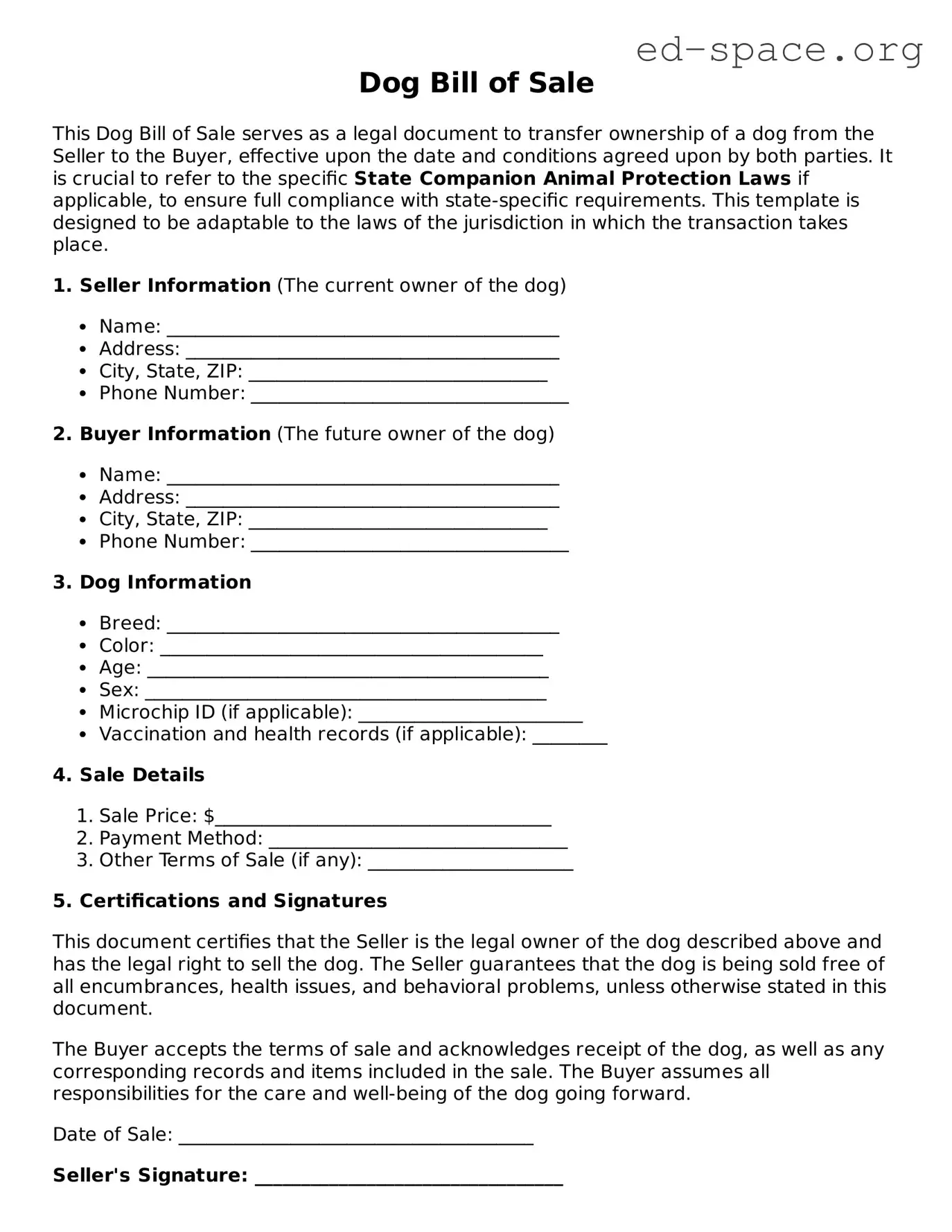Dog Bill of Sale
This Dog Bill of Sale serves as a legal document to transfer ownership of a dog from the Seller to the Buyer, effective upon the date and conditions agreed upon by both parties. It is crucial to refer to the specific State Companion Animal Protection Laws if applicable, to ensure full compliance with state-specific requirements. This template is designed to be adaptable to the laws of the jurisdiction in which the transaction takes place.
1. Seller Information (The current owner of the dog)
- Name: __________________________________________
- Address: ________________________________________
- City, State, ZIP: ________________________________
- Phone Number: __________________________________
2. Buyer Information (The future owner of the dog)
- Name: __________________________________________
- Address: ________________________________________
- City, State, ZIP: ________________________________
- Phone Number: __________________________________
3. Dog Information
- Breed: __________________________________________
- Color: _________________________________________
- Age: ___________________________________________
- Sex: ___________________________________________
- Microchip ID (if applicable): ________________________
- Vaccination and health records (if applicable): ________
4. Sale Details
- Sale Price: $____________________________________
- Payment Method: ________________________________
- Other Terms of Sale (if any): ______________________
5. Certifications and Signatures
This document certifies that the Seller is the legal owner of the dog described above and has the legal right to sell the dog. The Seller guarantees that the dog is being sold free of all encumbrances, health issues, and behavioral problems, unless otherwise stated in this document.
The Buyer accepts the terms of sale and acknowledges receipt of the dog, as well as any corresponding records and items included in the sale. The Buyer assumes all responsibilities for the care and well-being of the dog going forward.
Date of Sale: ______________________________________
Seller's Signature: _________________________________
Buyer's Signature: __________________________________
This document is executed in good faith and is intended to be legally binding. Both parties are encouraged to retain a copy of this Bill of Sale for their records and are advised to consult with a legal professional if any questions or concerns arise.
